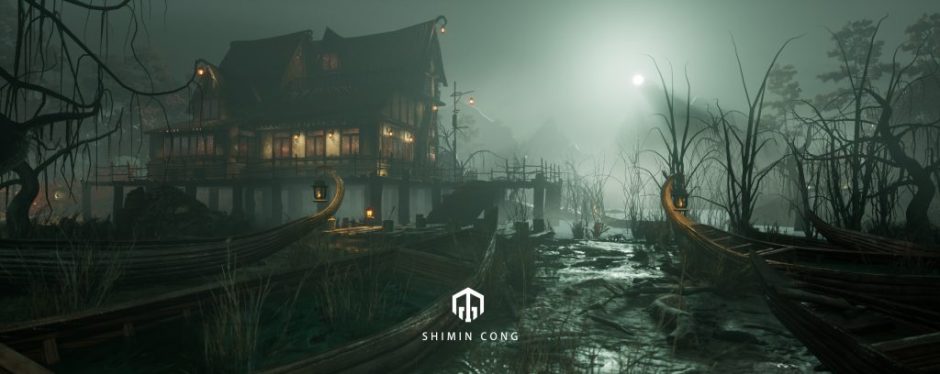Hi everyone, I am SHIMIN CONG. In this presentation, I will share my research direction in FMP and thesis. It will be divided into seven parts. The first is an overview of my thoughts and some references. Then I will clarify why I made this game and choose this thesis topic, as well as the relationship between FMP and thesis. Finally, I will talk about the research areas, what resources need to be used and my aim.
My FMP is a demo of a horror puzzle game with a play time of 5-10 minutes. Players will listen to a memory of the character in a short game time. The focus of game design is to bring players into an immersive experience. This includes the stylized model, lighting, and scene layout , Besides,a simple gameplay mechanism and a reasonable UI layout are also important. In general: Unlike the Term2 and Term3 game project which mainly focus on game technical issues, this game project will be more complete.
As for my thesis, it is a research on the immersive experience of the game. Mainly through flow experience and unconscious design to analyze how immersive games developed with art as the focus apply these two design theories.
There are eight characteristic elements of the central flow experience, including: 1 clear goal, 2 timely feedback, 3 challenge and ability balance, 4 sense of control, 5 elimination of distracting thoughts, 6 concentration of current tasks, 7 disappearance of self-awareness, 8 sense of time distort. In addition, Chen Xinghan proposed to integrate this theory into game production . Therefore, I will analyze the practical application of the flow experience of “flower” and “Journey”.
Unconscious design refers to the designer’s conscious design to let the player have unconscious operation. This article will describe how the game UI design enhances immersion in the unconscious way.
My project references are these four games. All of them have excellent scene art. In contrast, in the FMP, I researched more about the technology and the way of telling stories in Edith Finch. In addition, I will continue to study Chen Xinghan’s game works flower and journey, including the lighting of the game scene, game interaction and VFX.
Why choose create these. The first is interest and the need to find work. Secondly, in addition to the innovation in gameplay, many players have also begun to pay more and more attention to the visual effects of the game. And with the release of Unreal5, the quality of game art will also be greatly improved. Therefore, it is necessary to learn how to improve the ability of scene art. In addition, such a project can also provide a strong practical basis for my thesis.
Speaking of this, I will compare the similarities and differences between FMP and thesis. First of all, both of them are exploring the immersion of the game. The difference is the main work content of FMP is story and scene art. In addition, it will also study the structural framework logic and blueprint of the game.
Thesis will focus more on analyzing unconscious design and how Flow experience enhances the immersion of the game. Although this FMP can provide practical proof for thesis.
Therefore, the areas I will explore include Game level design, story arc, Interaction design, Unreal Blueprint, VFX system, Material system, Lighting system, terrain system and Engine logic.
There are many tools that will be used. Among them, MAYA is mainly used for modeling, rigging and animating. RizomUV for Unwrapping. Mari, mixer, substance designer and substance painter are used to make textures. Zbrush is for sculpt the model. Houdini is used to generate terrain. And Unreal4 is the main production tool for this project.
The last part is the goal of the project, firstly, I need to ensure that the task can be completed within the given time. It is necessary to have a good sense of immersion. Cognitive immersion and operational immersion. More specifically:
This game can provide more perceptual experience, and can cause strong emotional ups and downs in players. Using narrative design to make players more immersed.
The use of scene-based expressions gives players a sense of cognition. Players interact not only with monotonous information, but in a more atmospheric environment to complete the interaction.
Finally, Improve the skills required by game technical artists.
That is all.
Thanks for watching my presentation.
